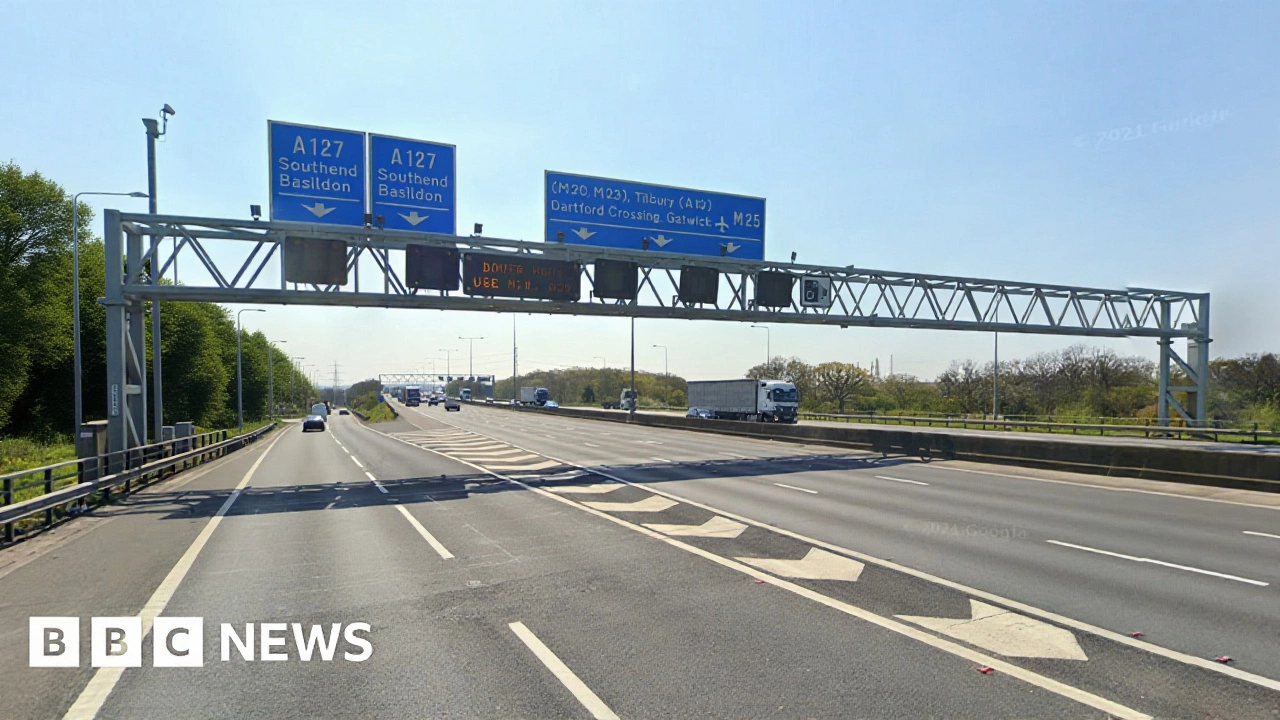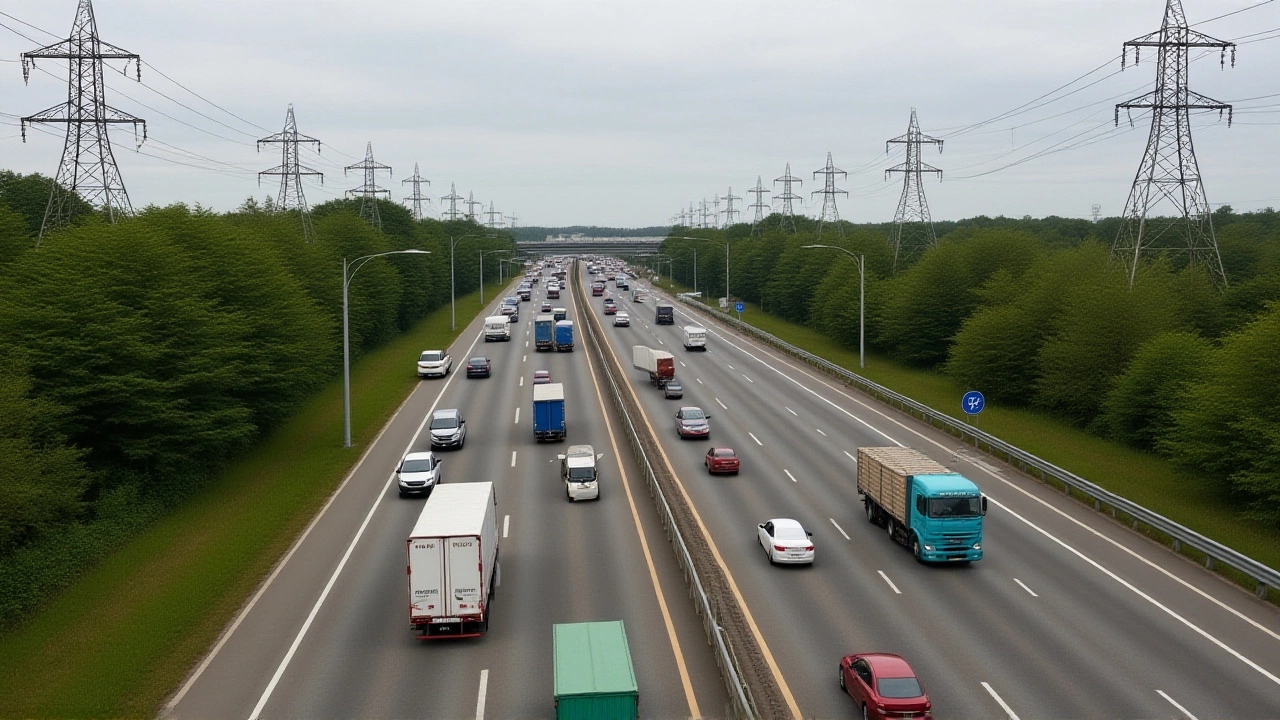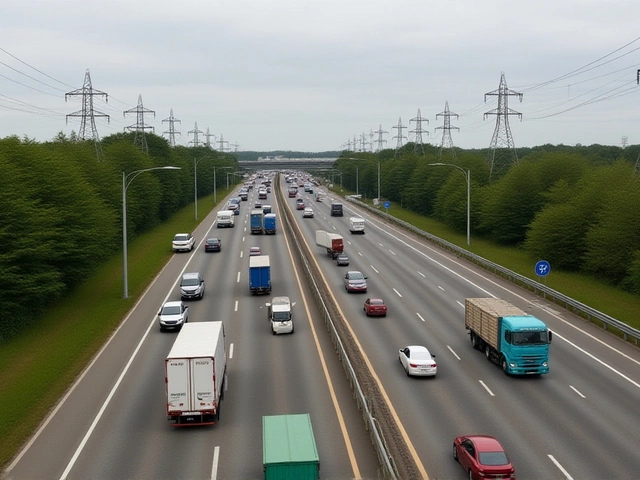A single-car crash involving a heavy goods vehicle on the M25 near Heathrow Airport left one man trapped and shut down one of Britain’s busiest motorway corridors early Thursday morning. The collision, which occurred on the clockwise carriageway at junction 14 in the London Borough of Hillingdon, triggered a major emergency response just after 4:41 a.m. UTC — a time when most of London was still asleep, and freight traffic was at its peak.
What Happened at Junction 14?
At 04:41 UTC, the London Fire Brigade received a call about a serious collision between a passenger car and a large lorry. The impact, still under investigation by the Metropolitan Police Service, pinned one man inside his vehicle. Firefighters from Hayes Fire Station, part of the LFB’s West Command, arrived within minutes alongside crews from Surrey Fire & Rescue Service. Using hydraulic cutters and air bags, they freed the driver by 05:15 UTC.
He was rushed to Hillingdon Hospital, where he received emergency care. Officials confirmed no other injuries. The lorry driver, whose identity remains undisclosed, was not trapped and reportedly walked away from the scene unharmed.
Why This Closure Matters
Junction 14 isn’t just any interchange — it’s the critical link between the M25 and the M4, the main artery into all five terminals at Heathrow Airport. With over 196,000 vehicles using the M25 daily in this stretch, the closure sent shockwaves through morning commuters, airport transfers, and freight logistics.
National Highways, the government body managing England’s strategic roads, reported minimum 40-minute delays stretching four miles in both directions — from Staines (junction 13) to Chertsey (junction 15). Traffic was diverted via slip roads, but queues built up fast. By 8 a.m., the congestion had spilled onto local roads in Hillingdon, delaying buses, taxis, and even emergency services.
Who Responded — And Why It Was a Coordinated Effort
The response was textbook multi-agency coordination. Hayes Fire Station, established in 1869, deployed two pumping appliances and an aerial ladder platform — standard for its high-risk zone near the airport. Surrey Fire & Rescue, which routinely aids London on border incidents, brought extra manpower and specialized extrication tools.
By 06:23 UTC, the fire services had cleared the scene. Responsibility shifted to the Metropolitan Police Service, whose Road Policing Unit now leads the investigation. Their focus: determining cause. Was it driver fatigue? A mechanical failure? Weather? The early hour makes fatigue a likely suspect — but no official findings have been released.
National Highways, meanwhile, kept variable message signs flashing warnings and updated their website every 15 minutes. Their role? Not just traffic control, but damage limitation. With Heathrow handling over 800 flights daily, even a two-hour closure can ripple through global supply chains.

What’s Next — And Why It Could Happen Again
There’s no estimated reopening time for the clockwise carriageway. National Highways says they’re waiting on police clearance and structural checks of the road surface and barriers. But here’s the twist: this isn’t an isolated event. In 2024, there were 17 significant collisions at M25 junctions involving HGVs — seven of them at junctions near Heathrow. The M25’s design, built in the 1980s, wasn’t made for today’s volume. Trucks carrying £1.2 billion worth of goods pass through here every day.
Experts say the solution isn’t just more cameras or speed limits. It’s better separation — dedicated HGV lanes, smarter AI-driven traffic alerts, and maybe even rerouting freight overnight. For now, though, drivers are stuck in gridlock, wondering when they’ll move again.
Background: The M25 and Its Burden
The M25, nicknamed the “London Orbital,” is more than a motorway — it’s the economic circulatory system of southern England. Stretching 117 miles, it connects 13 other motorways and serves 15 million people. Junction 14, specifically, is where the airport’s supply chain meets the national network. Delays here don’t just mean late flights — they mean spoiled food, delayed medical supplies, and canceled business meetings.
Hayes Fire Station, which responded here, is one of the busiest in the region. It handles over 3,000 calls a year — nearly half of them traffic-related. Surrey Fire & Rescue, though outside Greater London, is a vital partner. Their mutual aid agreement kicks in automatically when incidents occur near the border — a system that worked flawlessly here.
And yet, despite all the coordination, the system remains fragile. One crash. One trapped driver. And a motorway that carries 1 in 5 of all UK freight comes to a standstill.
Frequently Asked Questions
Was anyone else injured besides the driver who was trapped?
No. The London Fire Brigade confirmed only one casualty — the man extricated from the car. The lorry driver was unharmed and not trapped. Emergency crews conducted a full scene sweep and used thermal imaging to ensure no other individuals were at risk. No further injuries were reported to hospitals or police.
How long is the M25 expected to stay closed at junction 14?
There is no official reopening timeline. National Highways must wait for the Metropolitan Police to complete their collision investigation and certify the road’s structural integrity. Past similar incidents have taken 6–12 hours to clear, but this one may take longer due to the lorry’s size and potential fuel leaks.
Why did Surrey Fire & Rescue respond to a London incident?
Surrey Fire & Rescue routinely provides mutual aid to London along the Greater London border, especially near Heathrow. Their stations are closer to junction 14 than some LFB units, and their equipment complements London’s. This cross-boundary cooperation is standard practice for major incidents and has been formalized since 2018 under the South East Fire and Rescue Agreement.
How does this affect flights at Heathrow Airport?
While terminal operations continue normally, ground access is severely disrupted. Airport transfers, taxis, and freight lorries are rerouted, causing delays of up to 90 minutes for passengers and cargo. Airlines are advising travelers to allow extra time. Some cargo flights have been rescheduled due to delayed freight handling.
Is this the first major crash at junction 14?
No. In 2023, a similar HGV-car collision at the same junction caused a 10-hour closure. In 2021, a three-vehicle pileup there led to three hospitalizations. Junction 14 has seen 17 serious collisions involving HGVs since 2020, making it one of the top five high-risk zones on the entire M25 network.
What’s being done to prevent future crashes like this?
National Highways is reviewing signage and speed limits near junction 14, but long-term solutions are stalled due to funding. Experts have proposed dedicated HGV lanes and AI-powered collision warnings, but these require £200 million in infrastructure upgrades. Until then, drivers are urged to maintain distance, especially during early morning hours when fatigue is highest.

